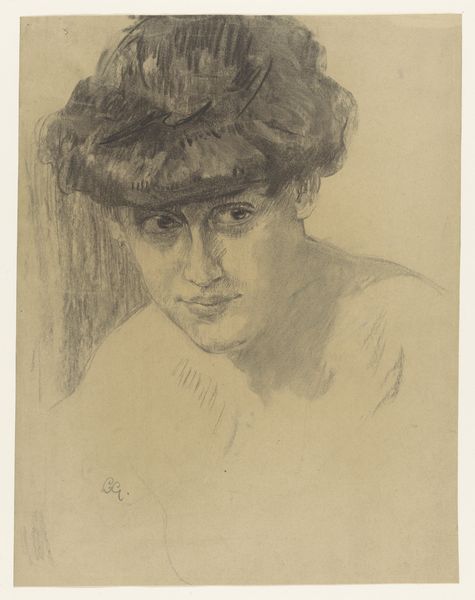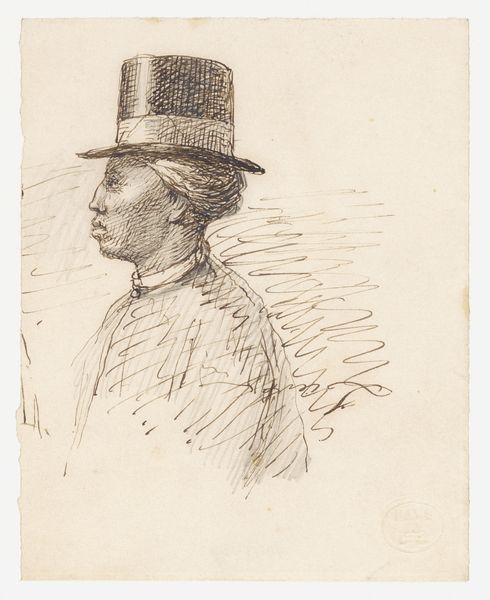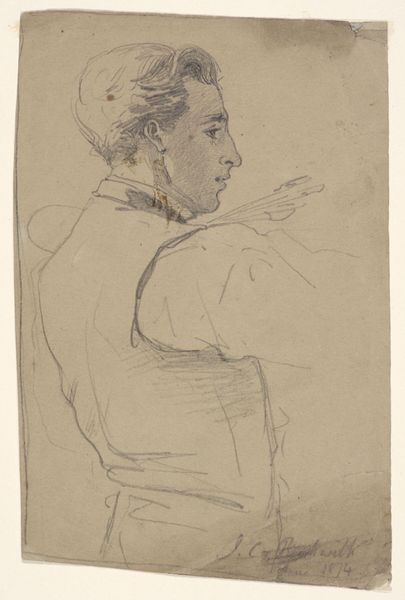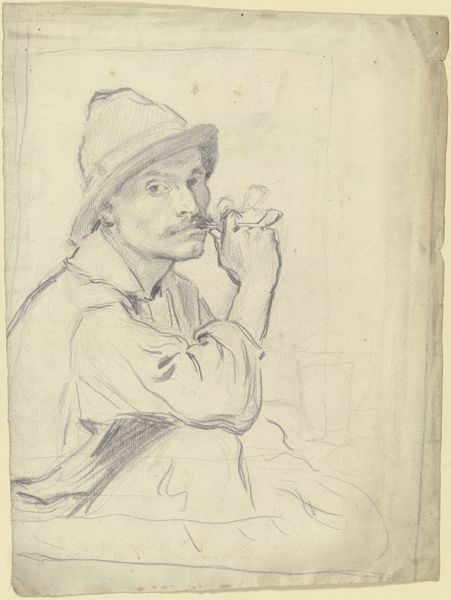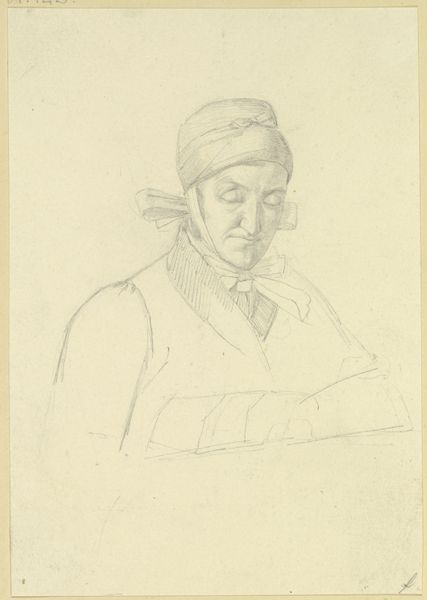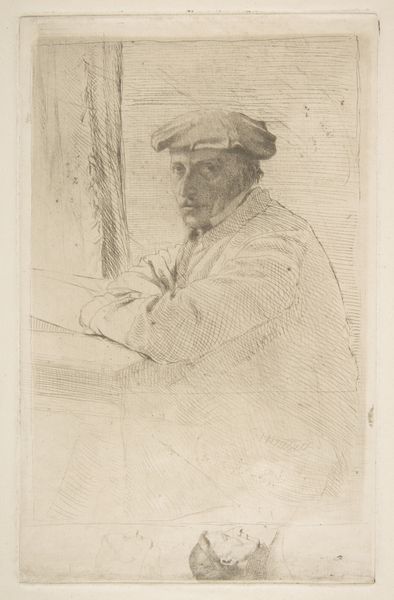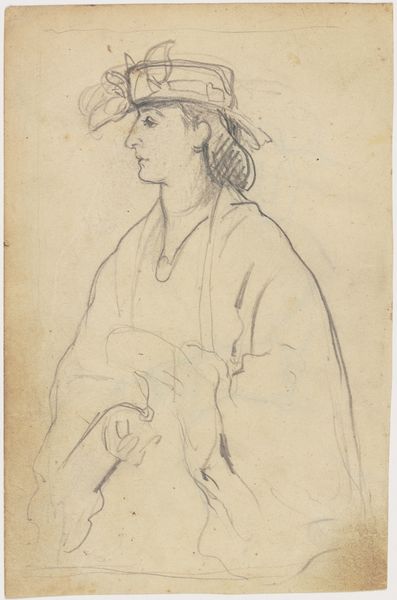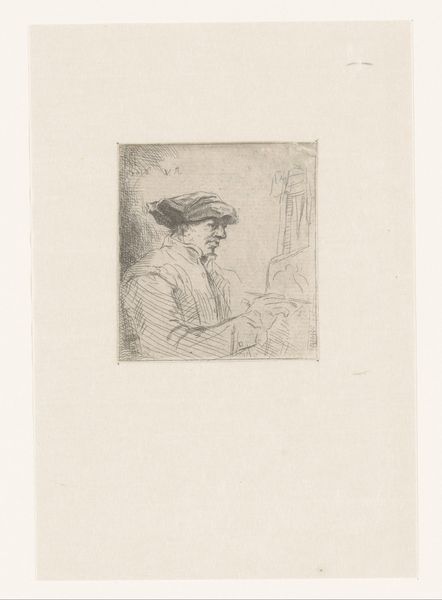
drawing, pencil
#
portrait
#
drawing
#
pencil sketch
#
pencil
#
sketchbook drawing
#
portrait drawing
#
academic-art
#
realism
Dimensions: height 338 mm, width 250 mm
Copyright: Rijks Museum: Open Domain
Editor: Here we have Nicolaas van der Waay's "Portret van een jonge man met luit," a pencil drawing from 1884. The soft hatching gives it such a gentle, almost melancholic feel. What strikes you most about this piece? Curator: The immediate thing that stands out to me is the process itself – the labor. Notice the dense network of pencil strokes; it's a deliberate application of material to create form. This isn't just about representing a young man, but about the act of representing him. Think about the number of hours dedicated to crafting the image through this very tactile medium. Editor: So, you're drawn to the physicality of the drawing rather than the sitter himself? Curator: Not exclusively, but the material process informs our understanding of the subject. How does the choice of pencil and paper shape our perception of the sitter’s status, of the setting in which this study takes place? Is the immediacy and inherent "cheapness" of the medium significant? I would even ask how it changes if, rather than a pencil sketch on paper, it was oil on canvas. Editor: That’s a great point. Oil on canvas signals a certain level of...completion, I guess? This feels much more immediate and personal, almost like we're looking over the artist's shoulder. It definitely feels intimate because the technique is so exposed to the eye. Curator: Precisely. Consider the role of academic training in the 19th century. This wasn't simply about natural talent, but the result of rigorous, often physically demanding, study and skill development, now almost entirely lost to art. This sketch gives us insight into this artistic labor and, perhaps, into art's economic position. What might that tell us about the societal understanding and acceptance of art back then, vis-a-vis now? Editor: Wow, I hadn’t considered that. Thinking about it as a document of labour, rather than just a portrait, gives me a totally new appreciation for it. Curator: And for the social systems within which it was made! Always ask about production.
Comments
No comments
Be the first to comment and join the conversation on the ultimate creative platform.

